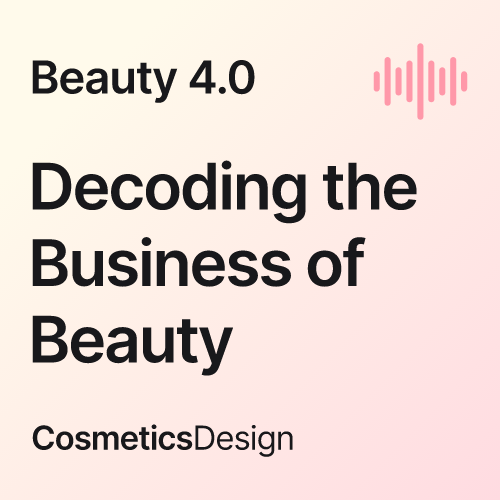Dollars and sense: How brick-and-mortar retailers can meet beauty consumers’ sensory needs post-COVID
![Retail design in a contactless and touchless post-pandemic market [Getty Images]](/var/wrbm_gb_food_pharma/storage/images/_aliases/wrbm_large/publications/cosmetics/cosmeticsdesign-asia.com/headlines/packaging-design/how-brick-and-mortar-retailers-can-meet-beauty-consumers-sensory-needs-post-covid/12773973-1-eng-GB/How-brick-and-mortar-retailers-can-meet-beauty-consumers-sensory-needs-post-COVID.jpg)
With the rapid advancement of digital commerce, brick-and-mortar retailers face the challenge of acquiring more effective tools to compete in the physical world. This has become more urgent given the impact that the pandemic has wrought on brick-and-mortar stores.
“Certainly, the pandemic has made it more difficult for businesses that rely on an in-person, face-to-face experience,” said Andrea Brown, design director at Mucca, a design and branding company based in the US.
“Many industries that have traditionally relied on in-store experiences, like food shopping and high-end luxury goods, have moved online, demonstrating that there are other ways brands can build trust outside of the physical storefront.”
Even before the pandemic hit, some physical retailers were already taking a multi-sensory approach to ensure their spaces served more than a transactional function.
However, this approach needed to evolve further in the COVID-era, where the element of touch is discouraged. This is trouble especially for beauty, where touch-and-try experiences have long been considered essential.
“We don’t have a crystal ball when it comes to the pandemic, but it certainly has highlighted the fact that it’s even more essential to have a strong brand in times of uncertainty,” said Brown.
“People will always crave a personal connection with the companies they support, so it’s more important than ever that brand communication makes people feel something, with a strong point of view and authentic tone of voice.”
Recently, the company worked with multi-brand beauty South Korean retailer Chicor to capture the attention of digitally native younger consumers.
The company worked with the Shinsegae-owned brand to develop a campaign, which consisted of a series of bold, vibrantly coloured visuals designed to reflect the beauty retailer’s uniquely playful spirit.
Among the design elements, Mucca introduced 3D treatment for the typography and graphic elements for the store which was inspired by the rise of online retail during the pandemic.
This gave the design aesthetic more of a “digital feel” that mimicked how models and products would appear in computer-generated cyberspace.
With a diluted multisensory experience, brands need to communicate through other assets such as brand typography – think Apple, Amazon, Disney, and the typeface that immediately comes to mind.
“One of the most powerful of these assets is a recognisable typeface that speaks to consumers and becomes synonymous with your brand. For instance, for Sephora we created a set of custom typefaces that defines the brand on every touchpoint—it’s become an investment that will last far beyond the latest marketing campaign,” said Brown.
‘Futureproofing’ retail
The physical retail space faces more hurdles than the uncertainty brought about by the pandemic.
For one, direct-to-consumer brands have increasingly become competitive players with their ability to leverage the power of social media to connect with consumers on a more personal level.
“With their ability to be more nimble than established brick-and-mortar retailers, they can take greater risks when it comes to their visual identities and marketing campaigns,” said Brown
Given the rapid pace trends develop, Brown said it was key for brands to leave room for change and progression.
“Trends come and go very fast, in large part because of the influence of social media. In creating the identity for multi-brand store Chicor, we kept in mind that the system should be conceived to grow, evolve, and be able to react to trends, while still retaining its core elements. That approach has helped it remain relevant and ‘futureproof’ while still retaining its loyal fanbase.”
![Global consumers cite convenience, time-saving and lower prices the key advantages of online shopping, with personalisation and variety and choice becoming more important for beauty and grooming [Getty Images]](/var/wrbm_gb_food_pharma/storage/images/_aliases/wrbm_medium/publications/cosmetics/cosmeticsdesign-europe.com/article/2021/11/08/uk-beauty-and-grooming-e-commerce-surged-during-covid-and-will-hit-2.45bn-by-2025-says-globaldata/12995204-1-eng-GB/UK-beauty-and-grooming-e-commerce-surged-during-COVID-and-will-hit-2.45bn-by-2025-says-GlobalData.jpg)
![The recent trend developments in the Asia Pacific beauty and personal care market. [Getty Images]](/var/wrbm_gb_food_pharma/storage/images/_aliases/wrbm_medium/publications/cosmetics/cosmeticsdesign-asia.com/headlines/market-trends/what-s-trending-the-most-read-stories-on-apac-beauty-market-and-consumer-insights5/12882060-1-eng-GB/What-s-trending-The-most-read-stories-on-APAC-beauty-market-and-consumer-insights.jpg)
![Virtual stores are only the tip of the iceberg when it comes to the potential of virtual reality in the beauty space. [ByondXR]](/var/wrbm_gb_food_pharma/storage/images/_aliases/wrbm_medium/publications/cosmetics/cosmeticsdesign-asia.com/article/2021/09/15/beauty-retail-future-incoming-tech-such-as-smart-glasses-will-take-beauty-retail-beyond-our-imagination/12799182-3-eng-GB/Beauty-retail-future-Incoming-tech-such-as-smart-glasses-will-take-beauty-retail-beyond-our-imagination.jpg)
![[Getty Images]](/var/wrbm_gb_food_pharma/storage/images/_aliases/wrbm_medium/publications/cosmetics/cosmeticsdesign-asia.com/headlines/market-trends/digital-dive-top-stories-on-digital-developments-making-waves-in-the-apac-beauty-industry4/12799332-1-eng-GB/Digital-Dive-Top-stories-on-digital-developments-making-waves-in-the-APAC-beauty-industry.jpg)

![Indus Valley is working to corner 30% of India's online premium boxed hair colour market. [Indus Valley]](/var/wrbm_gb_food_pharma/storage/images/_aliases/wrbm_tiny/publications/cosmetics/cosmeticsdesign-asia.com/article/2024/07/26/indus-valley-aims-to-secure-30-of-india-s-online-premium-hair-colour-market-with-organic-offerings/17594932-5-eng-GB/Indus-Valley-aims-to-secure-30-of-India-s-online-premium-hair-colour-market-with-organic-offerings.jpg)
![[Getty Images]](/var/wrbm_gb_food_pharma/storage/images/_aliases/wrbm_tiny/publications/cosmetics/cosmeticsdesign-asia.com/china/china-focus-latest-developments-in-china-s-booming-beauty-market25/17606695-1-eng-GB/China-focus-Latest-developments-in-China-s-booming-beauty-market.jpg)
![Kosé has launched makeup brand Visée in Singapore as part of plans to reinforce its position in SEA. [Visée]](/var/wrbm_gb_food_pharma/storage/images/_aliases/wrbm_tiny/publications/cosmetics/cosmeticsdesign-asia.com/headlines/business-financial/visee-singapore-kose-aims-to-enhance-brand-visibility-in-sea-with-new-launch/17587264-1-eng-GB/Visee-Singapore-Kose-aims-to-enhance-brand-visibility-in-SEA-with-new-launch.jpg)
![ble C&C is set on reinforcing its competitiveness in China’s beauty market. [Missha]](/var/wrbm_gb_food_pharma/storage/images/_aliases/wrbm_tiny/publications/cosmetics/cosmeticsdesign-asia.com/headlines/business-financial/able-c-c-aims-to-strengthen-competitiveness-in-china-through-online-expansion-kol-collabs/17591626-1-eng-GB/Able-C-C-aims-to-strengthen-competitiveness-in-China-through-online-expansion-KOL-collabs.jpg)

![LG H&H genetic study says 23 genetic regions affect natural skin tone. [Getty Images]](/var/wrbm_gb_food_pharma/storage/images/_aliases/wrbm_tiny/publications/cosmetics/cosmeticsdesign-asia.com/article/2024/07/23/lg-h-h-discovery-of-genetic-skin-tone-factors-in-east-asians-potentially-key-to-skin-radiance-developments/17587210-1-eng-GB/LG-H-H-discovery-of-genetic-skin-tone-factors-in-East-Asians-potentially-key-to-skin-radiance-developments.jpg)

![DR.CI:LABO expects brand-supplier partnerships gain more public prominence as consumers interest in skin care grows online. [Dr.Ci:Labo]](/var/wrbm_gb_food_pharma/storage/images/_aliases/wrbm_tiny/publications/cosmetics/cosmeticsdesign-asia.com/article/2024/07/22/brand-supplier-partnerships-will-come-to-the-fore-amid-the-online-skin-care-landscape-dr.ci-labo/17576755-1-eng-GB/Brand-supplier-partnerships-will-come-to-the-fore-amid-the-online-skin-care-landscape-DR.CI-LABO.png)